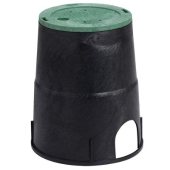On several sites, I've read posts by people asking for/suggestion for standardized DC wiring in a building. Currently, people who want a DC-only residence (or even a separate DC bus in addition to AC) must manage every wire in a system, connecting them with solder or wire connectors. This is not a sustainable (pun a bit intended) option for increasing alternative energy use or advancing alternative energy technology. Most people do not want to design and wire a complex electrical system and manufacturers are limited to the customer group that is at lease comfortable with electrical.
Technology and progress aside, using a standardized connector in a home is more aesthetically pleasing. Likewise, it affords the ability to plug in appliances in different parts of the house. Which is nice.
So, has anyone researched power over ethernet (PoE)? It's just what it sounds like, adding power to an ethernet cable such that devices on the end of it can be run from said power. It has been standardized (IEEE 802.3af) and there is a wide availability of devices capable of "injecting" power into the wires.
The IEEE 802.3af standard specifies injectors must be able to provide 0–12.95 watts (per cable) and there are multitudes of DC appliances that operate within this range.
Here's an example of a switch that can power devices via
PoE:http://planetechusa.com/poe-1200g-12-port-802-3af-gigabit-power-over-ethernet-injector-hub-full-power-200w.html?gclid=CJuykvmr47wCFctcMgodTE4ADQ
This guy costs a bit over $300. You can buy cat-5 ethernet cable and connectors for super cheap and crimping the connectors on is easy.
Another part of the IEEE standard mandates that power settings are configurable. So, you can turn off power to ports not in use, limit it to ports with high demands, etc etc.
Which brings me to this:
http://www.cepro.com/article/nuleds_launches_poe_lighting_solution_for_leds/
A company that sells crazy configurable LED lights that are powered by PoE and have an integrated system on them that makes them part of the network. They teamed with with Cisco (who now makes a PoE injector capable of injecting up to 60watts) and made this presentation:
So yeah, how does it sound to you guys. I'm a few months away from starting to build my new house and this is a serious contender on how I light it (house will be on solar power).




